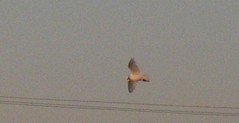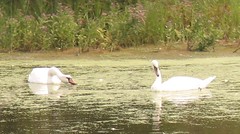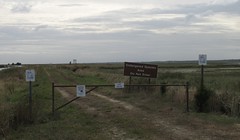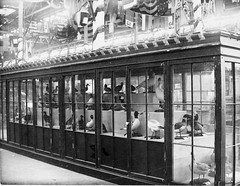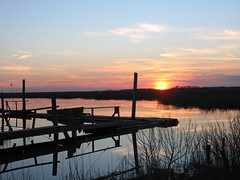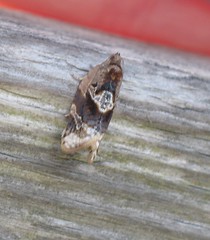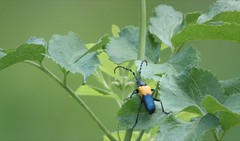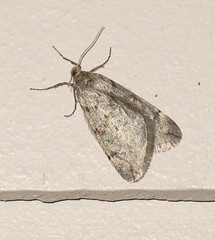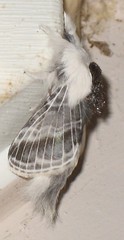"...the steady increase in climate warming suggests that this [Ivory Gull] is one of the least likely vagrants to visit NJ in the future."
By the end of the month, there was an Ivory Gull in Piermont, NY, not quite in NJ but close enough for regret.
Then, at the beginning of this year, there were two Ivory Gulls in Massachusetts, a circumstance that led to me doing my assigned reading for that week of classes in the back seat of a small car hurtling toward Plymouth. I had to get my homework done, of course, but an Ivory Gull as close as Massachusetts was too good to pass up (especially when I was able to add a visit to a cemetery of genealogical interest into the bargain, but that's another story). That experience led to the first installment of the current blog series on Bird Documentation in the Digital Age.
So now Cape May has finally gotten its Ivory Gull, which had the impeccable timing of arriving for Thanksgiving (though it seems to prefer fish heads to turkey on the menu). This is one occasion where I don't mind being wrong. In fact, in order to properly celebrate, I am posting a link roundup of Cape May Ivory Gull sightings in cyberspace. I hope to keep this post updated, and I'm sure I've missed something, so feel free to drop me a line at ammodramus88 residing at gmail.com if you would like to add something I've overlooked. And good luck to everyone looking for the gull over the weekend!
Ongoing coverage is on the blog at CMBO's website, but individual posts don't have permalinks, so I'm posting a general link to the blog. Another Cape May site with Ivory Gull pix is Bob Fogg's keekeekerr.com.
Ivory Gull newspaper coverage
(or, more accurately, online coverage from newspaper sites)
Cape May Times photo essay
Ivory Gull trip reports
Ivory Gull vids
"aburdo" vid
Benjamin Clock Ivory Gull foraging
Ray Duffy vid 1 vid 2
Ivory Gull photos
(if there are more than five photos from a particular photographer posted on Flickr or a similar site, I've just posted a general link to the photographer's online photo page. Screen names are in quotes.)
various photographers gallery on CMBO site
"Birding At Night" photo 1 photo 2 photo 3 photo 4 photo 5
"bluedasher" Flickr set
Devin Bosler photo 1 photo 2
Peter Burke photo 1 photo 2
Steve Byland photo
J. B. Churchill photo
Benjamin Clock photo 1 photo 2
Dave Czaplak Flickr set
Jeff Davis photos
Joe Delesantro Flickr set
Gerry Dewaghe PBase set
"donna lynn" photo
Ray Duffy photo
Sam Galick photo
Jim Gilbert photo 1 photo 2 photo 3 photo 4
Steve Glynn photo
Jennifer W. Hanson (bad) photos
"ingret9" Flickr set
Phil Jeffrey photos
"johnjos" photos in discussion thread on fredmiranda.com
Tom Johnson photo 1 photo 2 photo 3 photo 4 photo 5
Sandra Keller photo 1 photo 2
"KFiabane" photo
Tony Leukering photos
Karl Lukens set from 11/27 set from 11/28 set from 11/30
Chris Magarelli photo 1 photo 2
"mj3151" photos in discussion thread on whatbird.com
Dan Murray photo 1 photo 2 photo 3 photo 4 photo 5
"ngannet" photos
Jim Gilbert photo 1 photo 2 photo 3 photo 4
Steve Glynn photo
Jennifer W. Hanson (bad) photos
"ingret9" Flickr set
Phil Jeffrey photos
"johnjos" photos in discussion thread on fredmiranda.com
Tom Johnson photo 1 photo 2 photo 3 photo 4 photo 5
Sandra Keller photo 1 photo 2
"KFiabane" photo
Tony Leukering photos
Karl Lukens set from 11/27 set from 11/28 set from 11/30
Chris Magarelli photo 1 photo 2
"mj3151" photos in discussion thread on whatbird.com
Dan Murray photo 1 photo 2 photo 3 photo 4 photo 5
"ngannet" photos
J. G. Russell photos in discussion thread on photography-on-the.net
Harvey Tomlinson photo 1 photo 2
Dustin Welch photos
Scott Whittle set from 11/27 set from 11/28
Harvey Tomlinson photo 1 photo 2
Dustin Welch photos
Scott Whittle set from 11/27 set from 11/28
And thanks to Patrick Belardo for pointing out the all-important souvenir category to me. Not only can you get a cute Ivory Gull from Birdorable, you can also get a classic logo treatment from BirderGifts (no endorsement or economic profit to either myself or Patrick, for the record).
